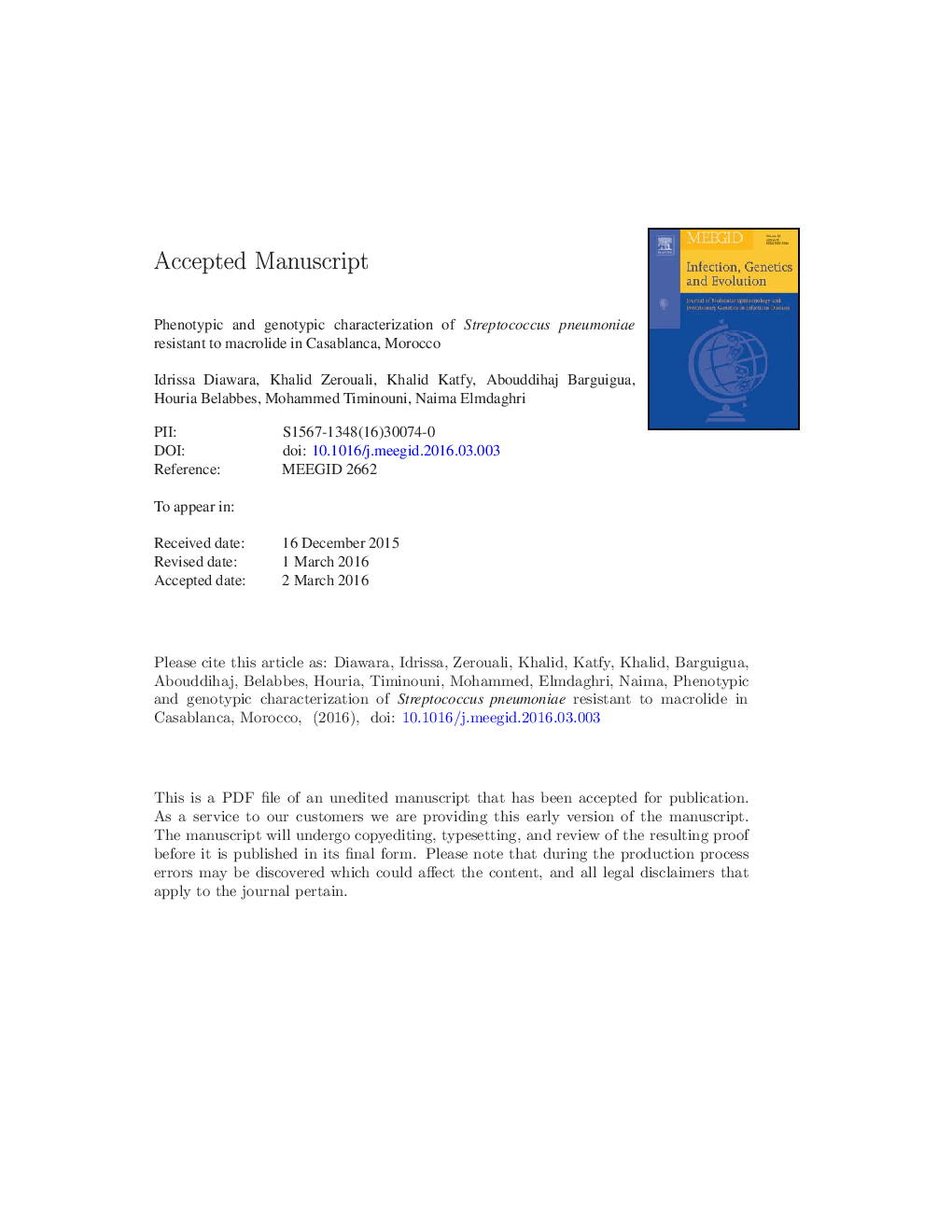| Article ID | Journal | Published Year | Pages | File Type |
|---|---|---|---|---|
| 5908328 | Infection, Genetics and Evolution | 2016 | 22 Pages |
Abstract
A total of 655 S. pneumoniae isolates were collected from 2007 to 2014 from pediatric and adult patients. Fifty-five percent of these isolates were from invasive pneumococcal diseases. Of the 655 isolates, 92 (14%) were ERSP. Globally, the proportion of ERSP from 2007 to 2010 (before vaccination) and from 2011 to 2014 (after vaccination) were 11.6% and 17.2% (p = 0.04), respectively. Of the 92 ERSP, 89%, 4% and 7% displayed constitutive MLSB (resistance to macrolide, lincosamide and streptogramin B), inducible MLSB, and M phenotype (resistance to macrolide only), respectively. ERSP genotypic analysis showed that 90.2% carried the ermB gene, 6.5% the mefE gene, and 3.3% both the genes (ermB + mefE). The most prevalent ERSP serotypes were 6B, 19F and 23F before vaccination and 19F, 6B, 6A and 23F after vaccination. Erythromycin resistance among S. pneumoniae is relatively high in Casablanca. The contribution of PCVs to the reduction in antibiotic use is encouraging but this should be accompanied by a rational use of antibiotic.
Related Topics
Life Sciences
Agricultural and Biological Sciences
Ecology, Evolution, Behavior and Systematics
Authors
Idrissa Diawara, Khalid Zerouali, Khalid Katfy, Abouddihaj Barguigua, Houria Belabbes, Mohammed Timinouni, Naima Elmdaghri,
